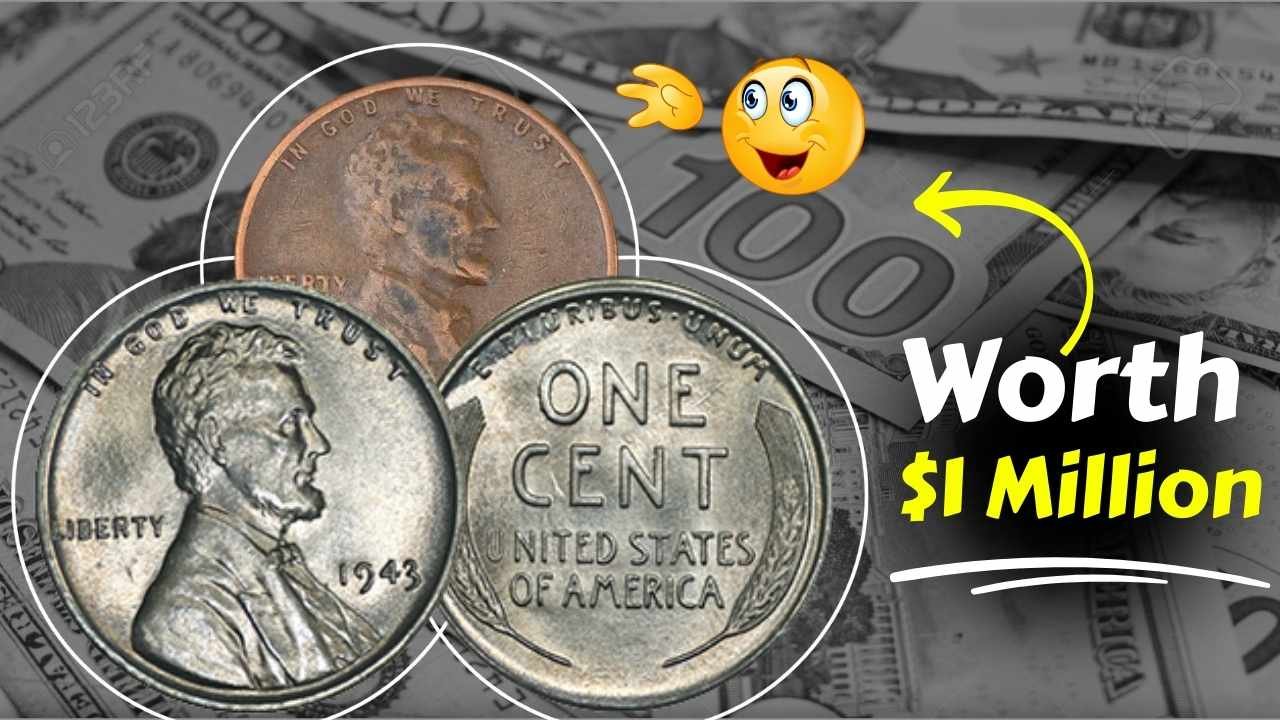Join on WhatsApp
Get the latest updates directly on WhatsApp – motivation, news & more!
The story of the Lincoln Wheat Penny is one of those timeless legends in the world of coin collecting. These humble little coins, minted more than a century ago, continue to capture the imagination of hobbyists and history lovers alike. And here’s the kicker: some of them are worth not just a few dollars but hundreds of thousands, even over $1 million.
Imagine digging through your spare change, only to realize that the penny in your palm could change your life forever. That’s the magic of the Wheat Penny.
The Origins of the Lincoln Wheat Penny
The Lincoln cent first appeared in 1909, celebrating President Abraham Lincoln’s 100th birthday. Designed by Victor David Brenner, it was the first U.S. coin to feature a real person’s portrait. The two wheat stalks on the reverse gave rise to the nickname “Wheat Penny,” a term still used by collectors today.
But here’s the twist: not all wheat pennies are created equal. While millions were produced, certain years, minting errors, and low production runs have turned a few versions into rarities worth a fortune.
Why Some Wheat Pennies Are So Valuable
The value of any coin depends on a mix of factors rarity, condition, historical significance, and demand among collectors. Wheat Pennies check all these boxes, which is why they remain one of the most popular coins to collect.
Here’s what makes some pennies truly special:
- Minting Errors – Coins with doubled numbers, missing letters, or unusual metal compositions are highly desirable.
- Low Mintages – Some years saw only limited runs, making those pennies harder to find today.
- Historical Appeal – Being tied to Lincoln’s centennial gives the first series added significance.
- Survival Rate – After decades of circulation, very few have survived in excellent condition.
Famous Rare Wheat Pennies
A handful of Lincoln Wheat Pennies have become legends, commanding staggering prices:
- 1909-S VDB Penny – With only 484,000 minted in San Francisco, these coins with Brenner’s initials (“VDB”) are worth thousands even in circulated condition.
- 1914-D Penny – A scarce Denver mint coin that remains one of the hardest to track down.
- 1922 “No D” Penny – A minting error left some coins without the Denver “D” mark, making them rare collectibles.
- 1943 Copper Penny – Perhaps the most famous of all. During WWII, pennies were supposed to be made of steel to conserve copper for the war effort. A few slipped through in copper, and today, these rarities have sold for over $1 million.
How to Spot a Rare Wheat Penny
If you’ve got a stash of old coins or even just pocket change here’s what to check:
- Dates to Watch: 1909, 1914, 1922, 1943, 1944
- Mint Marks: “S” (San Francisco) and “D” (Denver) often signal rarer editions
- Unusual Features: Doubled dates, missing marks, or off-center strikes
- Metal Composition: A 1943 copper or a 1944 steel penny is a jackpot find
- Condition: Uncirculated or well-preserved coins always fetch higher prices
Why Collect Wheat Pennies?
For collectors, Wheat Pennies are the perfect blend of history and affordability. While common versions might be worth only a few cents, they make a great starting point for beginners. On the other hand, rare varieties can sell for tens of thousands or even millions.
Collectors often focus on:
- Building year sets
- Hunting error coins
- Finding high-grade specimens
- Investing in rare and historic pieces
Over the years, interest in these coins has only grown, making them a cornerstone of American numismatics.
FAQs
What year Wheat Penny is worth the most?
The 1943 copper penny holds the crown, with sales exceeding $1 million.
Are all Wheat Pennies valuable?
Not all common ones may only be worth a few cents. But scarce years and error coins are worth thousands.
How can I know if I have a rare Wheat Penny?
Check the date, mint mark, condition, and unusual features or better yet, get it certified by a professional grading service.
Can I still find them in circulation?
Yes, though rare. They sometimes turn up in change, coin rolls, or estate collections.
Final Thought
The Lincoln Wheat Penny isn’t just spare change it’s a piece of American history. Whether you’re a seasoned collector or just someone who loves a good treasure hunt, keep your eyes open. That ordinary-looking penny in your pocket could be worth a fortune.


